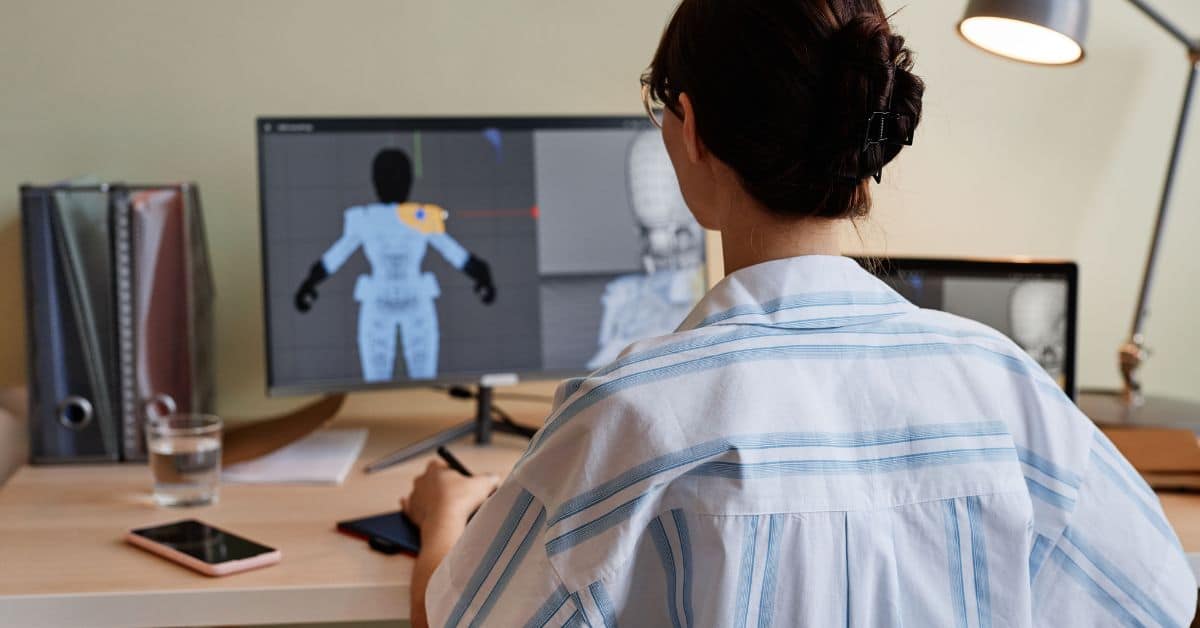Introduction:
The 2D animation segment is expected to record a notable CAGR of over 3% from 2024 to 2030. It is growing due to the surge in demand for animation in segments such as advertisements, education, gaming, and entertainment. In gaming, the market for 2D animation stands at more than 40%. This is impressive, especially with the current influx of 3D animation, and it is still a powerful tool for telling stories, especially in the realm of digital media and interactive storytelling.
In this blog, we’ll walk you through the 2D animation pipeline, breaking it down into three key phases: Pre-production, Production, and Post-production:
Pre-Production:
The pre-production phase is the foundation of the entire project. Did you know that good pre-production can decrease the overall cost of production by as much as 30%? For example, the popular 2D series Rick and Morty was able to maintain its consistent visual style and humor by starting with a strong concept and doing detailed storyboarding and character design.
Concept Development:
The first part of the 2D animation pipeline is concept development. It is here where ideas are born. We start by discussing your vision, your goals, and your audience. A good concept is essential for a good animation. We brainstorm ideas, draw rough concepts, and find a storyline that incorporates your brand’s message.
Scriptwriting:
With the concept nailed, it’s time to write the script – the ‘story time,’ if you will. The script at Frame Makerzzz needs to be punchy, tight, and crisp, with an eye on brand voice. Why? Because it’s the script that keeps the viewers interested – look at The Simpsons. The show’s biting, quirky humor has been its calling card for over three decades.
Storyboarding:
With the script in hand, we can now start to storyboard, which is a visual roadmap. A scene-by-scene sketch of the action is created, depicting where the characters are, how they move, and what camera angles to use. Pixar’s Toy Story was storyboarded frame by frame (its script had more than 3,000 frames). And guess what? 73% of marketers agreed that animated videos with storyboarding provide more impact.
Character Design:
Did you know animated characters are 1.5 times more likely to engage viewers compared to live-action characters? Characters are the cornerstone of every animation, so it’s essential to get them right. At Frame Makerzzz, we design characters to be appealing, memorable, and brand-identifiable. Mickey Mouse is a classic example of a successful character design – his simple, classic look made him a global icon.
Background Design:
While characters take the lead, the background defines the mood. Our backgrounds at Frame Makerzzz help tell the story. Whether it is a harbor scene or a quiet garden, we help tell the story. The background design in Studio Ghibli’s Spirited Away transports viewers to an otherworldly place, and the film’s architecturally rich scenes are a treat for the eye. 68% of animation professionals agree that high-quality background design can improve the overall impact of a 2D animation project.
Also Read: – What is the 3D Animation Production Pipeline
Production:
During the production phase, your vision starts moving, quite literally. In 2024, with the average animated explainer video clocking in at just under 2 minutes, the pressure is on to make every second count. This phase is where the magic happens as characters move, backgrounds come to life, and your storyboard transforms into an animated world.
Animatics:
Before diving into animation, we create animatics – essentially a rough edit that helps refine timing, pacing, and flow, like a dress rehearsal. In the case of Shrek, DreamWorks used animatics to hone the film’s comedic timing. According to industry studies, animatics can reduce production costs by up to 30% and shorten timelines by 25%, with more than 80% of studios reporting fewer revision cycles as a result.
Animation:
The most exciting stage of the process is the animation phase, where characters and scenes are brought to life frame by frame. It is here that the final movement sequences are created based on the animatic blueprint. The difference it makes is evident in Disney’s The Lion King (1994) – which became a classic in animation history due to the attention to detail in character movement by the animation team. Research has shown that good animation can improve engagement by 47%.
Voiceover and Sound Design:
In the Voiceover and Sound Design step of the 2D animation pipeline, we add the audio elements, which bring the story to life. Voiceover artists record dialogue, character voices, and narration. The sound design includes creating and adding layers of sounds such as sound effects, music, and ambiance that enhance the storyline and the visual elements. For example, the characters in the movie Toy Story (1995) are brought to life by voiceover work from Tom Hanks and Tim Allen paired with dynamic sound effects, adding depth and realism to the beloved characters.
Post-Production:
In the post-production phase, animators make final adjustments to the product, including editing. Post-production can sometimes take 40% of the time of the whole project, depending on the level of detail needed in the animation. For example, Adventure Time’s post-production consisted of a lot of editing because they wanted to make sure it would appeal to both children and adult audiences.
Composting:
Compositing in the 2D animation pipeline is where all elements, such as backgrounds, characters, and effects, are rendered together and placed into the final scene so it looks coherent and polished. Layering, color correction, and the addition of special effects bring the final product to life. The composition of The Lion King (1994) was crucial for blending hand‑drawn characters and backgrounds to create the Pride Lands. Compositing can cut the production time of the final shot by up to 20%.
Editing:
The editing phase in the 2D animation pipeline is essential in creating a polished final product. It entails piecing an animated scene together, tweaking the timing to make it smoother or faster, and adding sound effects to create a smooth transition from one frame to the next. For example, in Avatar: The Last Airbender, the show’s breathtaking action scenes and emotional depth would have a different impact with careful editing. Editing is an essential step in the animation process and can save up to 20% of production time.
Delivery and Distribution:
Once everything’s polished to perfection, it’s time to share your story with the world. At Frame Makerzzz, we ensure your animation is delivered in the best quality and ready to dazzle on any platform. Imagine how Coca-Cola’s animated holiday ads warm hearts across TV and social media every year. Did you know that 76% of marketers say that video content has helped them increase sales? That’s the magic we aim to create for you—whether it’s for YouTube, a corporate event, or a full-blown ad campaign. Let’s get your message out there where it belongs!
Factors Impacting 2D Animation Production Timelines:
Creating 2D animation is a detailed process influenced by several key factors. Recent data suggests that projects with more detailed animation can take 20% longer to produce.
Complexity:
Detailed animations take longer. Disney’s Beauty and the Beast (1991), with its 3.6 million hand-drawn frames, is the benchmark. 2D animation of high quality typically takes between 8 and 12 weeks per minute to finish.
Revisions:
Extended revision cycles also delay a project. Industry data shows that revisions delay 35% of animation projects. Better communication helps to reduce this.
Voiceover and Sound Design:
These components can extend schedules. Frozen (2013), for example, incurred additional costs and delays in its voiceover sessions and soundtrack. Proper planning helps avoid such additions.
Resources:
This refers to the talent available, either to animate or record the voice. According to the Animation Guild, 60% of production delays are due to resource constraints. If you get your team in order from the get-go, you’re golden.
Conclusion:
At Frame Makerzzz, we’ll walk you through every step of the 2D animation pipeline because you need to know where you’re going to get there. With the global 2D animation market expected to grow at a rate of 8.4% annually through 2027, it’s more exciting than ever to be part of this creative wave. Every step of the way, from concept to the final frame, is an integral part of creating animations that will make you shine!
Your story, our animation. Let’s make some magic—Reach out now!



